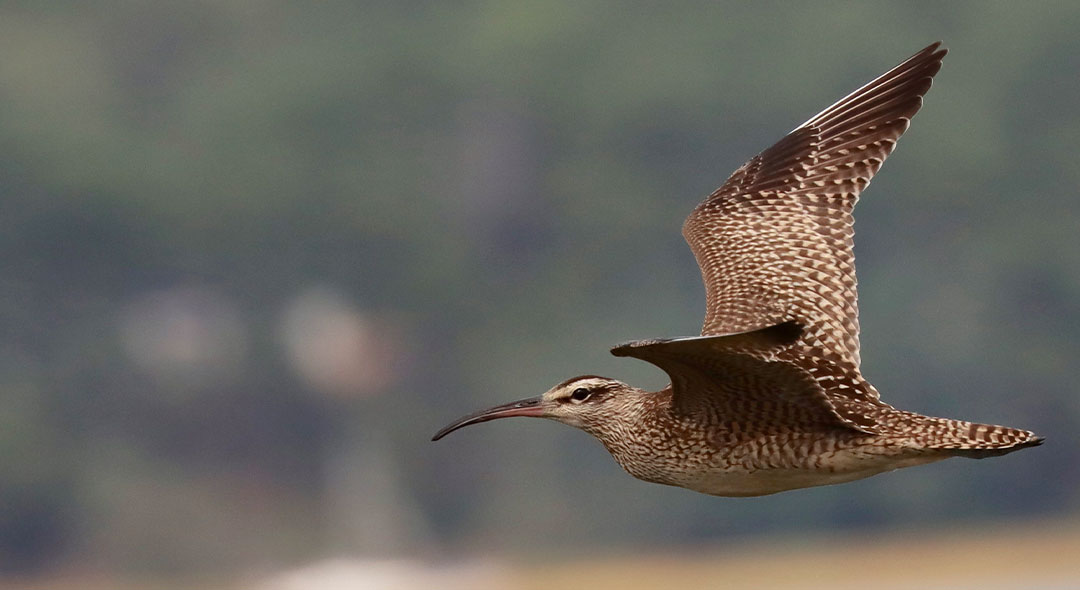This article was originally published in the Boston Globe on September 04, 2014 and was written by Jaclyn Reiss. View the original article here.
As the population of coastal birds declines both worldwide and in Massachusetts, a conservation group in Plymouth will lead a day-long event celebrating the migratory birds and discussing ways to help stabilize their numbers.
The Manomet Center for Conservation Sciences will join various countries to mark the inaugural World Shorebirds Day on Sept. 6, which seeks to raise awareness on the plight of the world’s endangered migratory birds.
“There are over 200 species around the world, and 60 to 70 percent of them have been showing major declines in recent decades,” said Brad Winn, director of shorebird habitat management at the Manomet center.
In some cases, experts point to human influence as a reason for the shorebirds’ population turbulence. Humans have increasingly encroached on the birds’ natural habitat, which usually includes freshwater wetlands, beaches, and marshes, Winn said.
Approximately 190 species of birds nest regularly in Massachusetts, according to state documents. More than two dozen here are endangered or approaching endangerment, including coastal birds like the
upland sandpiper, common loon, piping plover, and the common, least, roseate, and arctic terns.
Winn said international collaboration is necessary to help the shorebirds, since many of them migrate halfway across the world, stopping in several different countries on their remarkable journeys.
“The more people learn about them, the birds and biology and migrations they undertake — they are inspiring at the very least,” he said. “We have the tools and the understanding to be able to bring some of these populations back up.”
One of the most dire situations is in Asia, where the land surrounding the Yellow Sea – bordered by Korea and China — is being “reclaimed” by humans for agricultural fields, Winn said.
“There’s a wide-scale filling of tidal wetlands that these birds depend upon during migration — hundreds of thousands of acres of filling is going in,” he said. “They’re just creating more land over the habitats that the birds need to live upon during migration. This is where their food is located.”
The problem also hits close to home. The population of red knots, a coastal bird with reddish-orange markings and a long, thin beak that is often seen along Massachusetts shorelines, has dropped 80 percent in the past 20 years, Winn said.
He said the harvesting of horseshoe crabs in Delaware Bay and Massachusetts waters has probably led to the red knots’ approaching endangerment, since the birds depend on the stingray shaped anthropod for food.
“The decline in horseshoe crabs is tied into the dying of the birds in certain stopover sites,” Winn said.
Following the red knots’ population decline, the federal government is considering adding the bird to its endangered species list, said Mary Griffin, commissioner of the state Department of Fish and Game.
She said Massachusetts has helped species like the piping plover by closing beaches to ensure their nests were not disturbed, much to the chagrin of some beach-goers.
“In the mid-1980s, there were about 130 pairs in our state, and that number has grown five-fold while trying to conserve their habitat,” she said in an interview Tuesday.
The cause for some shorebirds’ population decrease remains elusive.
Semipalmated plovers, which are small coastal birds with short, stubby beaks, have been rapidly declining in recent years, but Winn said scientists are working to figure out exactly why.
Winn said he and other scientists started tracking the birds with GPS devices to find out more about their migratory patterns, which could potentially help with population recovery.
In a video he filmed for the Manomet center, he noted that a plover he had tagged flew 10,300 miles, from northern Canada to South America. The bird went 3,300 miles on its longest leg, six days without stopping, Winn said.
“In that little brain is the map of the Western Hemisphere,” he said.
The extinction of birds has a long history. In the late 1800s to early 1900s, humans hunted them extensively for meat, which Winn said was often sold in restaurants. The Eskimo curlew species was completely wiped out during this time, Winn said.
“Lots of shorebirds were killed in very large numbers and driven down to extinction levels,” he said. “The laws started coming in fairly early in the 1900s, and then increased in strength, including the Endangered Species Act of 1973.”
The American oystercatcher serves as a prime example of the ebb and flow of human impact on local birds. The population of the flashy bird with an unmistakable long, orange beak had long been receding, Winn said. But recently, conservationists roped off their nesting areas on some local beaches, hoping to give the birds a reprise from human life.
So far, it has worked.
“There were huge efforts to bring that species back, and the population has now been increasing,” Winn said. “They’re slowly making a comeback.”
Officials at the Manomet center will celebrate World Shorebirds Day by leading two bird-watching expeditions in Plymouth on Saturday morning.
The conservation center will host talks by local birding experts in the afternoon, including a keynote speech from Griffin.
The events are free, but registration is required.





 Back to all
Back to all